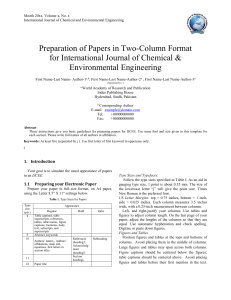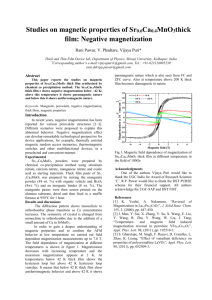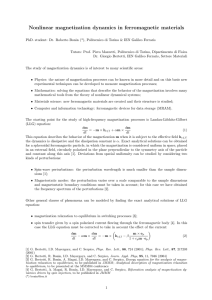Template for Abstract of ICMAGMA-2014
advertisement
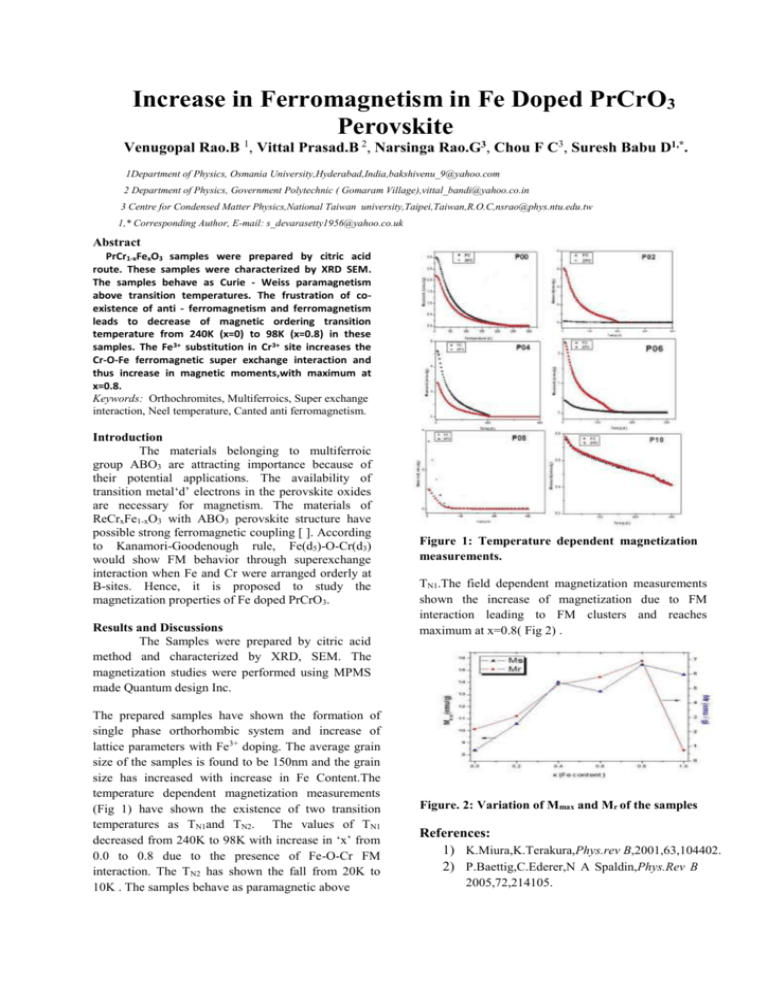
Increase in Ferromagnetism in Fe Doped PrCrO3 Perovskite Venugopal Rao.B 1, Vittal Prasad.B 2, Narsinga Rao.G3, Chou F C3, Suresh Babu D1,*. 1Department of Physics, Osmania University,Hyderabad,India,bakshivenu_9@yahoo.com 2 Department of Physics, Government Polytechnic ( Gomaram Village),vittal_bandi@yahoo.co.in 3 Centre for Condensed Matter Physics,National Taiwan university,Taipei,Taiwan,R.O.C,nsrao@phys.ntu.edu.tw 1,* Corresponding Author, E-mail: s_devarasetty1956@yahoo.co.uk Abstract PrCr1-xFexO3 samples were prepared by citric acid route. These samples were characterized by XRD SEM. The samples behave as Curie - Weiss paramagnetism above transition temperatures. The frustration of coexistence of anti - ferromagnetism and ferromagnetism leads to decrease of magnetic ordering transition temperature from 240K (x=0) to 98K (x=0.8) in these samples. The Fe3+ substitution in Cr3+ site increases the Cr-O-Fe ferromagnetic super exchange interaction and thus increase in magnetic moments,with maximum at x=0.8. Keywords: Orthochromites, Multiferroics, Super exchange interaction, Neel temperature, Canted anti ferromagnetism. Introduction The materials belonging to multiferroic group ABO3 are attracting importance because of their potential applications. The availability of transition metal‘d’ electrons in the perovskite oxides are necessary for magnetism. The materials of ReCrxFe1-xO3 with ABO3 perovskite structure have possible strong ferromagnetic coupling [ ]. According to Kanamori-Goodenough rule, Fe(d5)-O-Cr(d3) would show FM behavior through superexchange interaction when Fe and Cr were arranged orderly at B-sites. Hence, it is proposed to study the magnetization properties of Fe doped PrCrO3. Results and Discussions The Samples were prepared by citric acid method and characterized by XRD, SEM. The magnetization studies were performed using MPMS made Quantum design Inc. The prepared samples have shown the formation of single phase orthorhombic system and increase of lattice parameters with Fe3+ doping. The average grain size of the samples is found to be 150nm and the grain size has increased with increase in Fe Content.The temperature dependent magnetization measurements (Fig 1) have shown the existence of two transition temperatures as TN1and TN2. The values of TN1 decreased from 240K to 98K with increase in ‘x’ from 0.0 to 0.8 due to the presence of Fe-O-Cr FM interaction. The TN2 has shown the fall from 20K to 10K . The samples behave as paramagnetic above Figure 1: Temperature dependent magnetization measurements. TN1.The field dependent magnetization measurements shown the increase of magnetization due to FM interaction leading to FM clusters and reaches maximum at x=0.8( Fig 2) . Figure. 2: Variation of Mmax and Mr of the samples References: 1) K.Miura,K.Terakura,Phys.rev B,2001,63,104402. 2) P.Baettig,C.Ederer,N A Spaldin,Phys.Rev B 2005,72,214105.





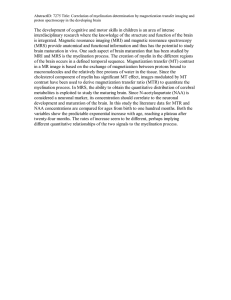
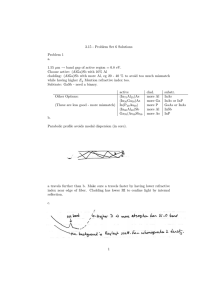
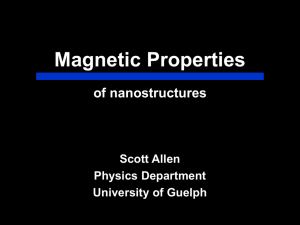
![Photoinduced Magnetization in RbCo[Fe(CN)6]](http://s3.studylib.net/store/data/005886955_1-3379688f2eabadadc881fdb997e719b1-300x300.png)
